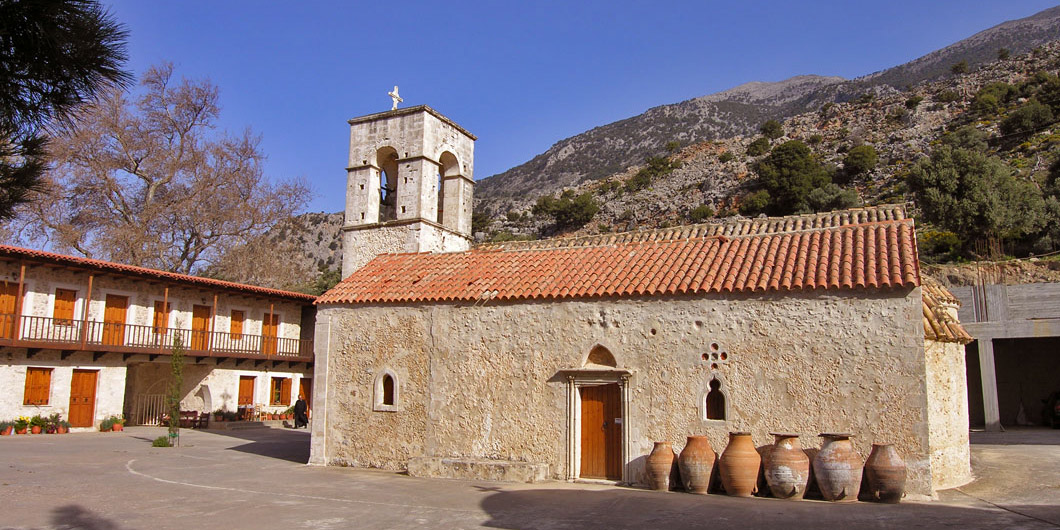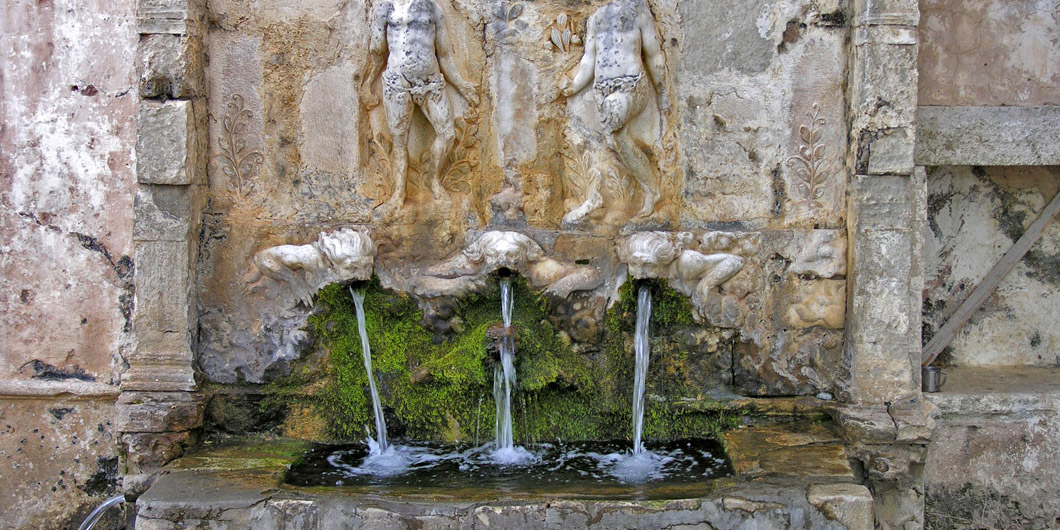Vrontisi Monastery, located northwest of Zaros, is one of the most renowned and important monasteries on Crete, serving as a noteworthy centre for letters and arts during the Cretan Renaissance and the scholars, artists and venerable monks of Vrontisi Monastery sealed the era with their presence during the final centuries of the era of Venetian rule.

Acclaimed manuscript copiers, painters and teachers established their name at the monastery and in the region. It was here that Michail Damaskinos painted six of his most important icons, while, according to tradition, El Greco apprentices worked at the monastery workshop for a time.
The Monastery was possibly founded during the 2nd Byzantine era and reached its peak during the Venetian era, entering its decline after the Ottoman conquest of Crete in 1669, during which it was often the victim of Ottoman brutality.
The destruction of the Monastery suffered during the 19th century in particular was fatal for an enormous number of relics. Only a few traces remain of the cultural peak of one of the premier centers of the Cretan Renaissance.
Most of the monastery buildings have been destroyed, but their fortress-type characteristics can still be seen, with a two-aisled church at the centre dedicated to Saint Anthony and Saint Thomas.
Within the two-aisled church, parts of the remarkable murals can still be seen. An important section of the murals is the depiction of Saint Symeon Theodochus holding the Divine Infant. Among the interesting paintings on the chancel screen is the Vine of the Angel, one of the most noteworthy icons of the Cretan School.

Outside the monastery, beneath the century-old plane trees, there is one of the most remarkable sculptures of rural Crete, reminiscent of the peak of the monastery. This is a carved fountain with the water gushing out of the mouths of three lions, while the relief is completed with the depiction of Adam and Eve.













